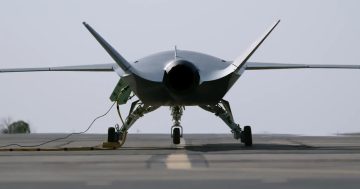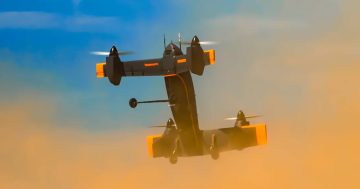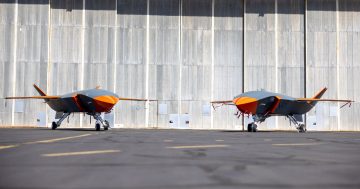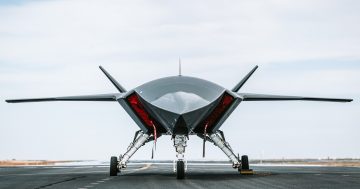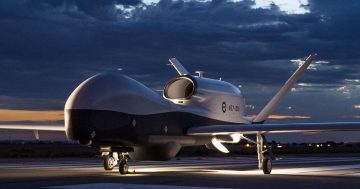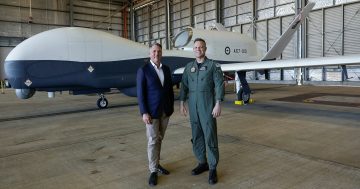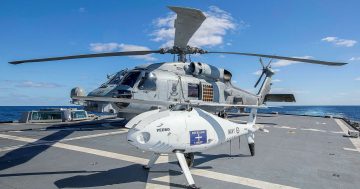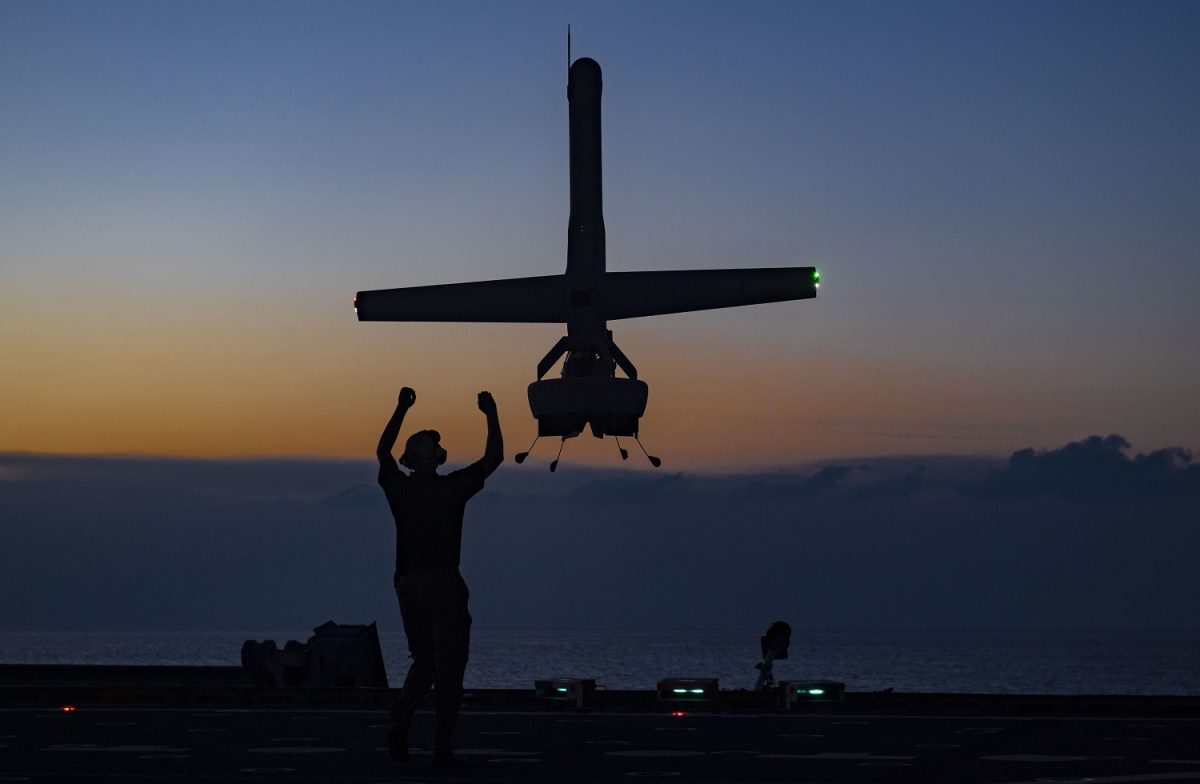
The V-BAT UAS can take off and land vertically, and has a sensor suite in its nose. Photo: US Navy.
Melbourne-based computer vision and artificial intelligence (AI) software company Sentient Vision Systems has made another successful foray into the huge American defence market, signing a strategic collaboration with US technology company Shield AI.
The collaboration will see Sentient and Shield AI jointly develop wide-area motion solutions for sensors carried primarily by uncrewed aerial systems (UASs) operated by the US military, the Australian Defence Force (ADF), and possibly for international customers.
Sentient’s Kestrel software system is already in widespread use in the US and around the world aboard crewed and uncrewed aircraft with electro-optical infrared sensors for search-and-rescue and maritime targeting applications.
Its new Visual Detection and Ranging (ViDAR) system is an optical radar wide-area search capability that is particularly suited to the maritime environment. It is designed to autonomously find objects on the surface of the ocean in high sea states, over greater distances and wider areas than traditional search methods.
Shield AI has developed an AI pilot particularly suited to swarming UASs. It has also developed the unique V-BAT vertical take-off and land (VTOL) UAS, operated by the US Special Operations Command and undergoing extensive trials by the US Army and US Navy.
ViDAR uses an electro-optic infrared (EO/IR) sensor to detect and classify targets in the imagery stream that would be invisible to a human operator or other sensors, and this will be integrated into the V-BAT system.
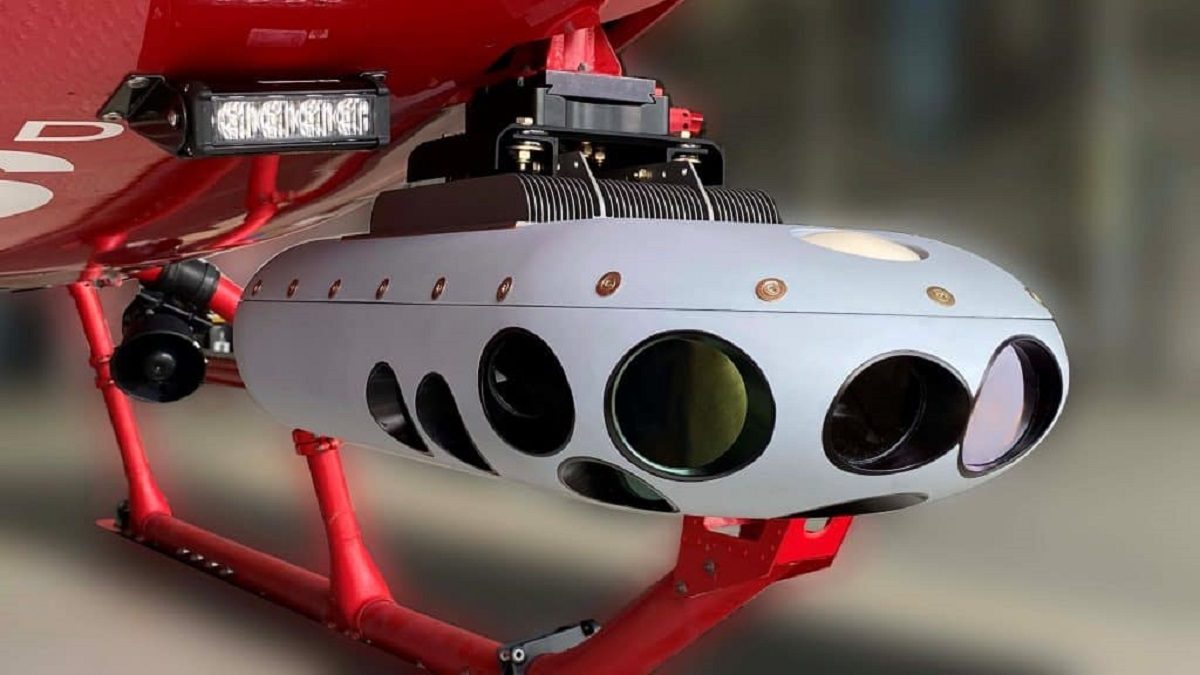
Sentient makes a podded ViDAR system with its own integrated sensors and mission system. Photo: Sentient.
“This work with our Australian partner, Sentient, is a unique opportunity to fuse the innovation prowess of two companies from allied countries on opposite sides of the world. Together, we are shaping the future of defence technology,” Shield AI president and co-founder Brandon Tseng said in a 10 August statement.
Sentient’s chief technology officer Mark Palmer added: “Sentient is excited and proud to be working with Shield AI on this truly breakthrough solution.
“We look forward to combining the AI expertise and operational understanding of our two great teams to deliver superior ISR capabilities for today’s rapidly changing defence and security environment.”
Sentient has been developing AI sensor systems for more than 20 years. In essence software-based systems that can be integrated with many kinds of civil or military optical and radar-based sensors, Sentient’s Kestrel and ViDAR systems can be integrated with small military UASs, para-public search-and-rescue and military naval combat helicopters, and commercially derived light aircraft, right up to large crewed military maritime or overland intelligence, surveillance and reconnaissance (ISR) aircraft.
Sentient also produces its own podded ViDAR system, which has its own integral sensors and mission system for use aboard crewed or uncrewed aircraft that don’t have their own onboard sensors.
Original Article published by Andrew McLaughlin on Riotact.


